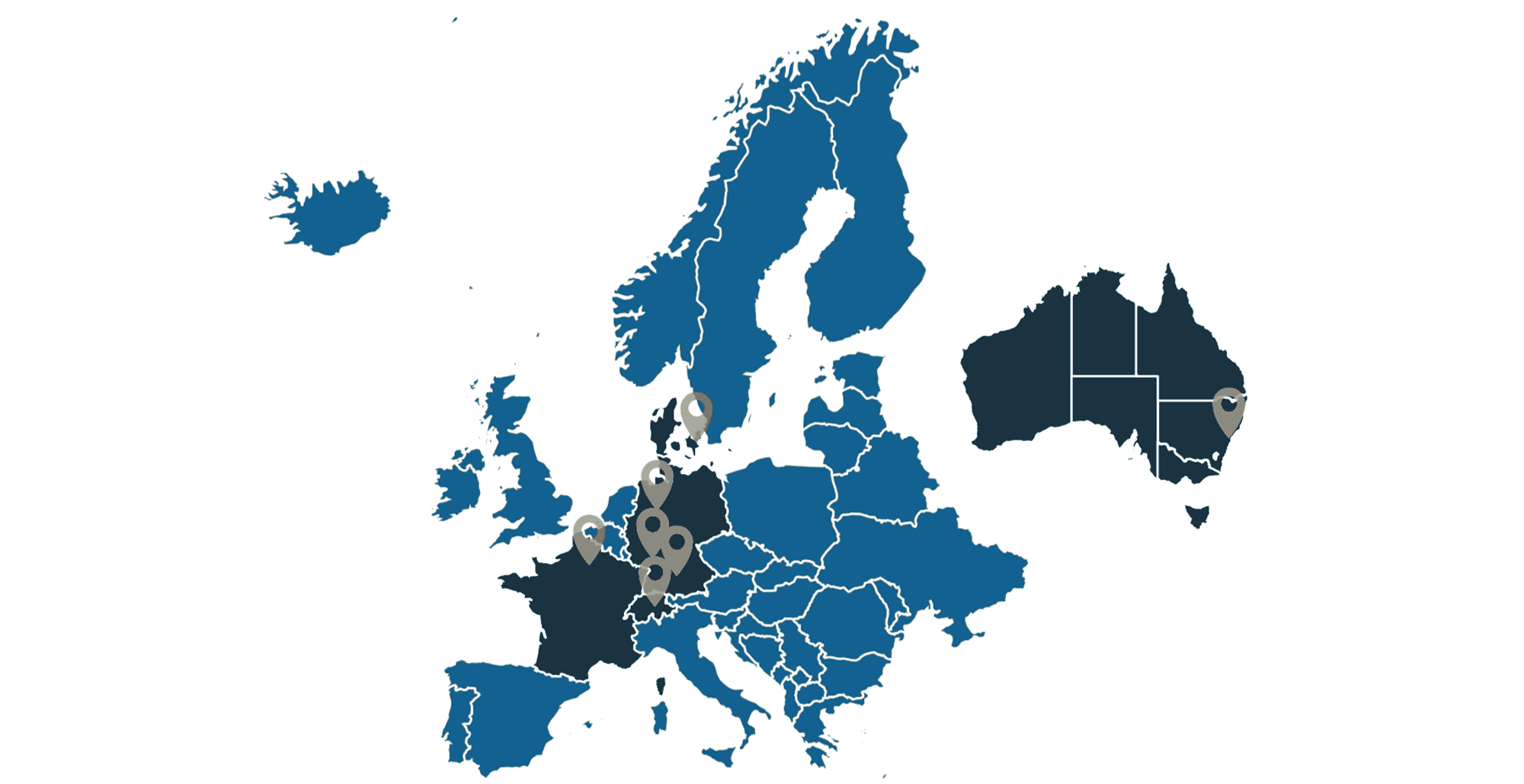The partners of the SONAR consortium are a balanced group that range from academic research at universities to industry-targeted research and development. It comprises five partners from Europe and one from Australia:
Partners
Project partners and involved countries


The Fraunhofer Institute for Chemical Technology (ICT) with many years of experience in European project’s leadership will coordinate SONAR. Further project contributions of the ICT will be the design and fabrication of RFB test cells, experimental characterisation of RFBs, model validation and technoeconomic analysis of RFBs. Efficient dissemination and exploitation of the project results will be achieved by the Fraunhofer Institute for Algorithms and Scientific Computing (SCAI). SCAI will also ensure communication with the Industrial Exploitation Board and work out services for the European industry, e.g. to offer workflows for high-volume pre-selection of redox couples or RFB design. Moreover, it will integrate the mathematical models and data-driven models to allow for high-volume pre-selection of redox couples, develop surrogate models for integration of experimental data, and provide inverse design approaches for RFB design. Technical University of Denmark (DTU) will develop atomistic-scale modelling methods for characterisation of molecules for RFB applications. It will work on bridging atomistic and mesoscopic scales, w.r.t. the electrochemical reactions at the electrode/electrolyte interface and connect electronic structure calculations and data-driven models. The French Laboratoire de Réactivité et Chimie des Solides (LRCS) at Université de Picardie Jules Verne is responsible for the modelling of electrochemical interfaces by means of kinetic Monte Carlo methods and experimental model validation. It will investigate competitions and synergies between reactions and aging mechanisms at the electrochemical interface and evaluate its impact on the RFB performance. The Zurich University of Applied Sciences (ZHAW) in Switzerland will work out numerical upscaling methods of electrochemical reactions at the electrode/electrolyte interface to the continuum scale, work out volume averaging techniques to allow for continuum scale RFB cell modeling and simulation. It will work out ready-to-apply solutions for industry to allow for model based characterisation of RFBs. This will be achieved by combining lab-sized test cell fabrication, experimental data analysis, and RFB device simulations. The Karlsruhe Institute of Technology (KIT) in Germany will investigate the microstructure of porous electrodes and perform finite volume simulation of electrolyte fluid flow in RFBs. Finally, the University of New South Wales (UNSW) in Australia will contribute stack and system level modelling, hydraulic modelling of commercial stacks taking into account flow paths and pressure drops in all parts of a stack, couple hydraulic, electrochemical and thermal models, and work on system level modelling including losses from piping, pumping, and electrical losses.
 Modelling for the search for new active materials for redox flow batteries
Modelling for the search for new active materials for redox flow batteries